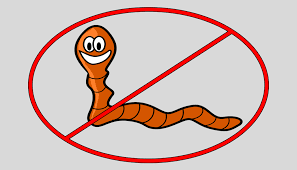Tapeworms and Fleas go hand in hand…..

Tapeworm Infection in Cats
What are tapeworms?
Tapeworms are flat, segmented intestinal parasites of the cat and dog. They belong to a different family than other intestinal parasites, such as hookworms and roundworms, which are the other common intestinal parasites of cats and dogs. Several types of tapeworms are known to infect pets, but the most common species observed in cats is Dipylidium caninum.
Are certain cats more likely to get tapeworms?
Fleas are the intermediate host for tapeworm. In other words, the tapeworm is unable to complete its life cycle without the presence of fleas in the environment. Regardless of whether the owner has seen fleas on the cat, or in the home, the cat must have ingested a flea in order to have tapeworms.
“Fleas are the intermediate host for the tapeworm, Dipylidium caninum.”
Consequently, tapeworms are more common in environments that are heavily infested with fleas. It is recommended to treat your cat for fleas if tapeworms are noted, and use flea control to prevent future flea infestations and tapeworm infections.
What are the clinical signs of tapeworm infection?
Tapeworms are not particularly harmful to the cat and few clinical signs are attributed to their presence.
Usually, the cat is brought to the veterinarian because the owner notices the presence of proglottids crawling on feces. Rarely, tapeworms may cause debilitation or weight loss if they are present in large numbers. A cat will occasionally scoot or drag its anus across the ground or carpet due to the anal irritation caused by the proglottids; however, this behavior is much more common in dogs than cats.
Occasionally, a tapeworm will release its attachment in the intestines and migrate to the stomach. When this happens, the cat may vomit an adult tapeworm several inches in length.
Is there anything else that I should do?
Flea control is the cornerstone of the management and prevention of tapeworm infection. Flea control products are convenient to use. Depending on the type of product you use and the presence of other pets in your home, you may also need to treat your house and yard for fleas. With some of the newer products, environmental flea control may not be needed. Circumstances vary however, so be sure to talk to your veterinarian.
“Flea control is the cornerstone of preventing tapeworm infection.”
If the cat lives in a flea-infested environment, tapeworm infection can become re-established within a few weeks. This is very rarely due to treatment failure; in most cases, reappearance of tapeworm segments represents a re-infection of the cat.
Article taken from: https://www.ckvets.com/pet-health/



